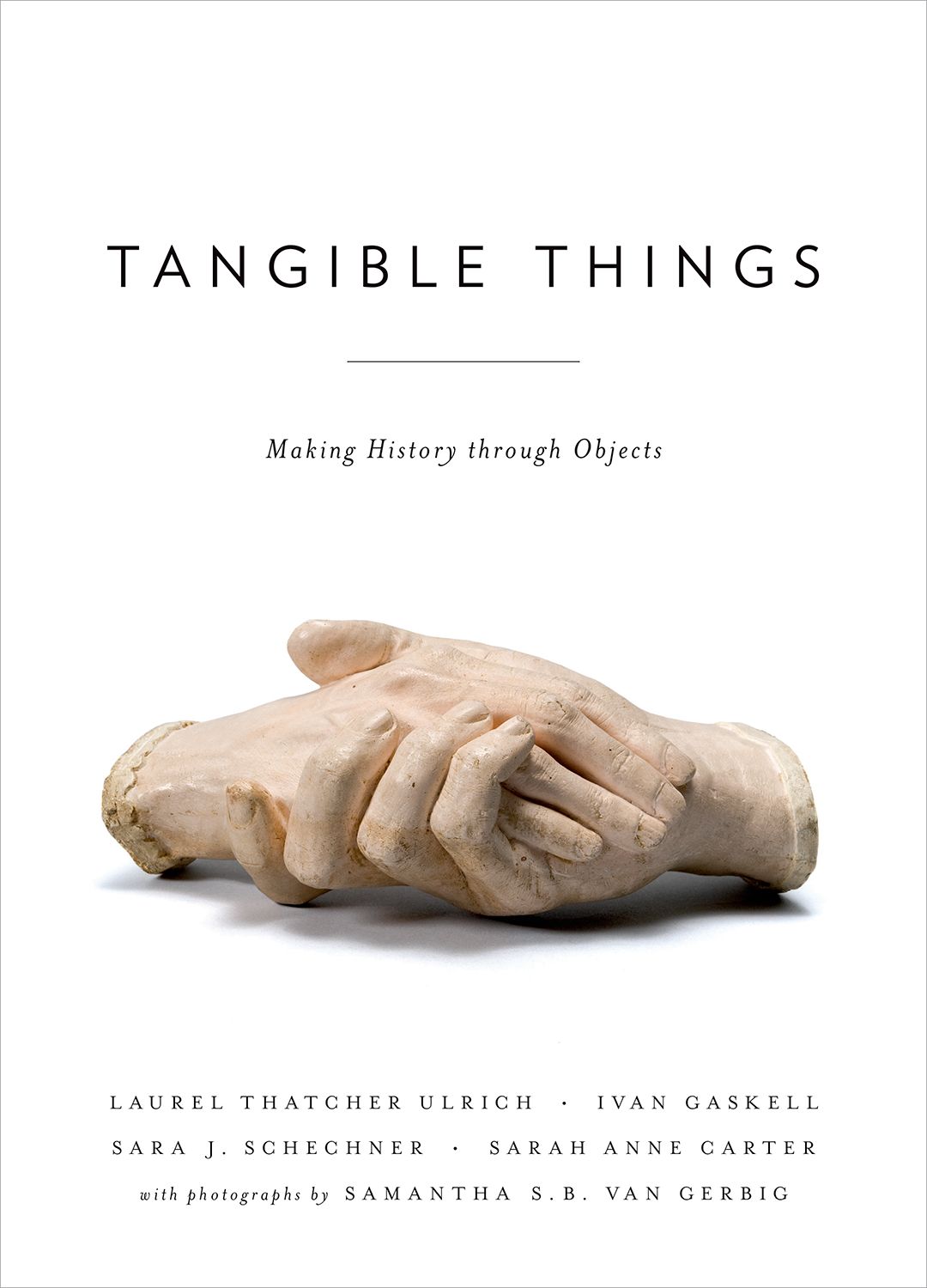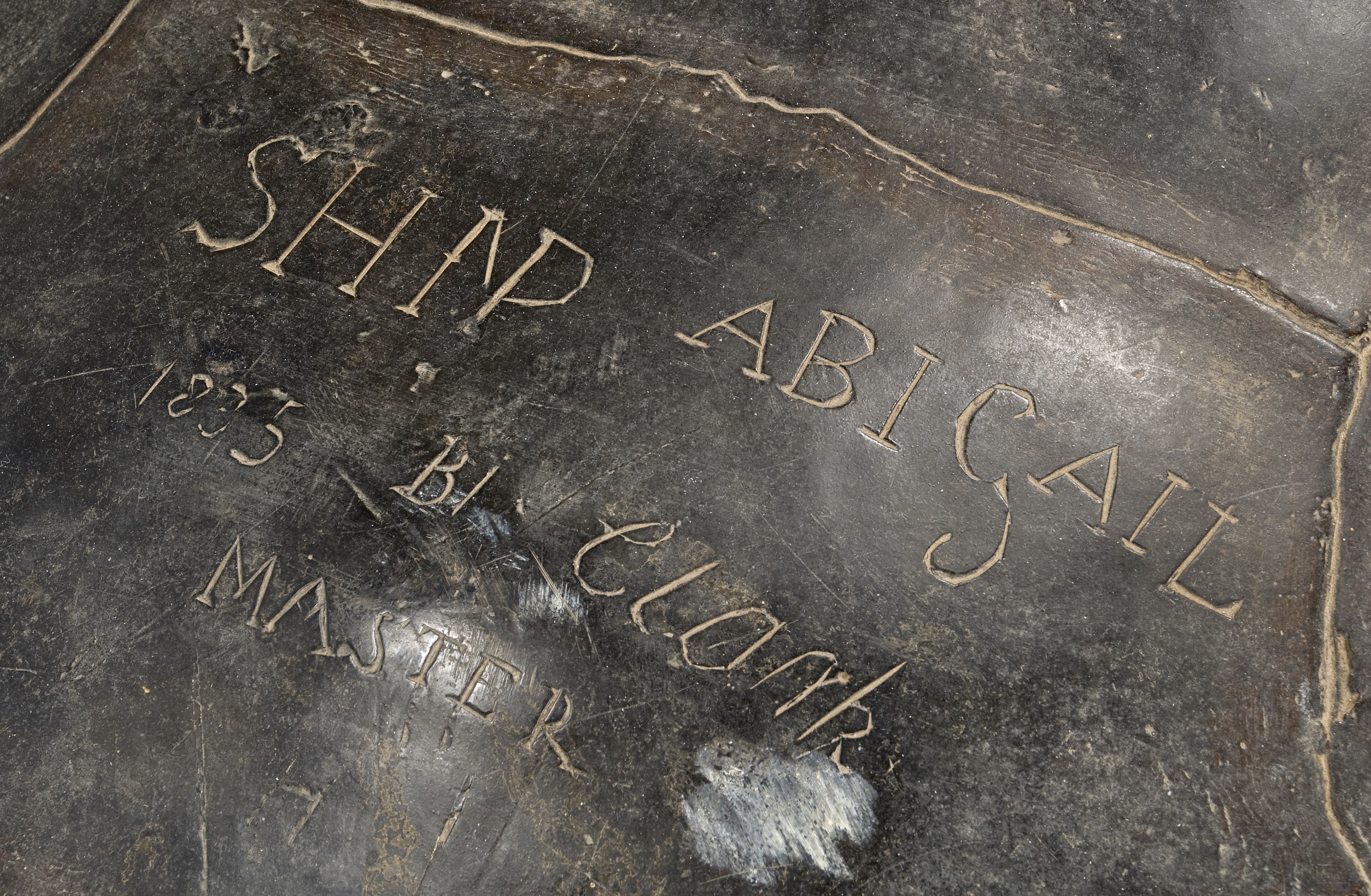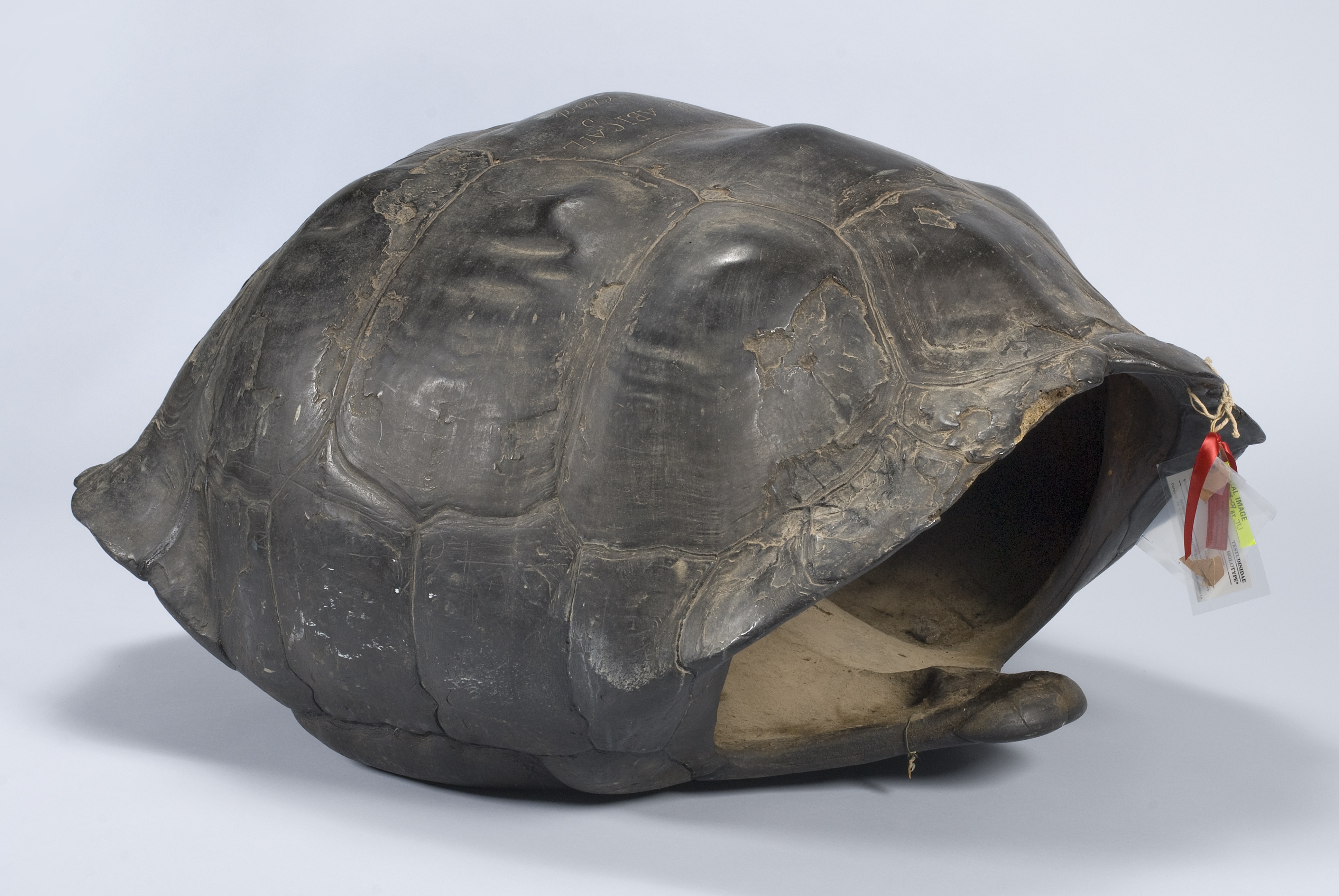By Sara J. Schechner (Guest Contributor)
The dome-shaped shell was once a walking signboard. Graffiti cut by sailors into the shell reads “SHIP ABIGAIL / 1835 B[en]j[amin] Clark / MASTER.” Now the Galapagos tortoise specimen R-11064 belongs to Harvard’s Museum of Comparative Zoology.
She came from an archipelago of volcanic islands that Herman Melville considered spellbound and cursed. “Take five-and-twenty heaps of cinders dumped here and there in an outside city lot; imagine some of them magnified into mountains and the vacant lot the sea; and you will have a fit idea of the general aspect of the Encantadas, or Enchanted Isles,” Melville wrote in 1854. “Little but reptile life is here found….No voice, no low, no howl is heard; the chief sound of life here is a hiss.”
Whaling crews, however, found the Galapagos a welcome source of refreshment. The Abigail of New Bedford, a ship under the command of Captain Benjamin Clark, reached the islands in May 1834 and took onboard 140 tortoises. Able to survive without food or water for as long as a year, the creatures provided fresh meat to the crew for many months. They were piled among the barrels of sperm whale oil in the hold or allowed to roam the decks as pets. This specimen was likely eaten near the end of the voyage and so made it back to Massachusetts as a souvenir in June 1835.
Charles Darwin ate his share of tortoise meat when the Beagle visited the Galapagos that same year. Nine months later he began to consider the distribution of tortoises of diverse sizes and shapes among the islands as possible evidence for the instability of species and the influence of environment on their diversification.
Starting in 1824, the tortoises throughout the archipelago were described by zoologists as a single species, Testudo nigra, and the ship Abigail specimen was identified as the holotype—i.e., the specimen used by scientists to define this species. More recently, DNA analysis has concluded that there are fifteen known species (Geochelone spp.), three of which are extinct.
Old museum records indicated that the Abigail specimen had been collected on Charles Island, although it was not the native type found there. Scientists speculated that it had floated to Charles after being cast overboard by buccaneers clearing their decks before a battle. The scientific riddle was solved by historical research. According to the Abigail’s logbook preserved in the New Bedford Free Public Library, the tortoise was actually caught on Porter’s Island where it was the native type.
In the early 1840s, Melville was fascinated by the tortoises that nightly trudged along the deck of his whaling ship in the Pacific. His recollections were so vivid that he fancied he spied them in the corner shadows of candle-lit old mansions in Massachusetts, “slowly emerging from those imagined solitudes, and heavily crawling along the floor, the ghost of a gigantic tortoise, with ‘Memento * * * * *’ burning in live letters upon his back.”
So how do we classify this tortoise marked “SHIP ABIGAIL ”? As the most fundamental of scientific specimens, dinner scraps from the world of whaling ships, a message written large on an Ecuadorian reptile, or an enchanted muse for our time?
 Sara J. Schechner is the David P. Wheatland Curator of the Collection of Historical Scientific Instruments at Harvard University, where is she is part of the history of science department and has taught museum studies. She recently received the Joseph H. Hazen Education Prize (2008) of the History of Science Society for a career of innovative and diverse object-based teaching. She lives in a historic house on the National Register and has an archaeological site in her back yard. She is one of the authors of Tangible Things: Making History through Objects, along with Laurel Thatcher Ulrich, Ivan Gaskell, Sarah Anne Carter, and Samantha van Gerbig.
Sara J. Schechner is the David P. Wheatland Curator of the Collection of Historical Scientific Instruments at Harvard University, where is she is part of the history of science department and has taught museum studies. She recently received the Joseph H. Hazen Education Prize (2008) of the History of Science Society for a career of innovative and diverse object-based teaching. She lives in a historic house on the National Register and has an archaeological site in her back yard. She is one of the authors of Tangible Things: Making History through Objects, along with Laurel Thatcher Ulrich, Ivan Gaskell, Sarah Anne Carter, and Samantha van Gerbig.


